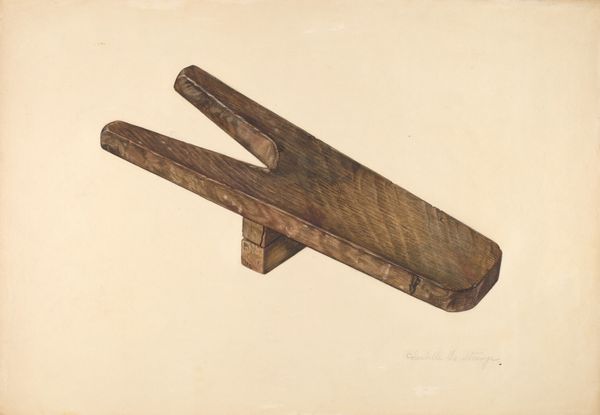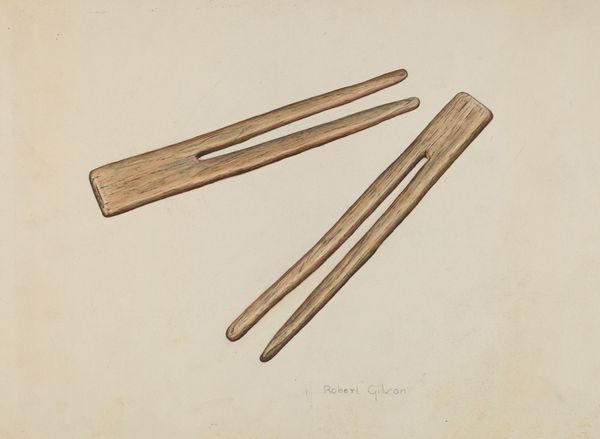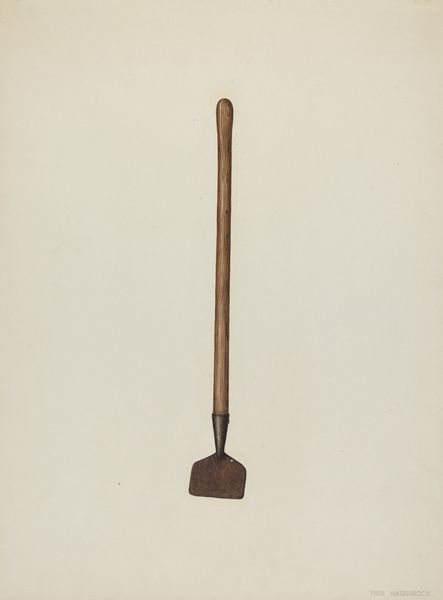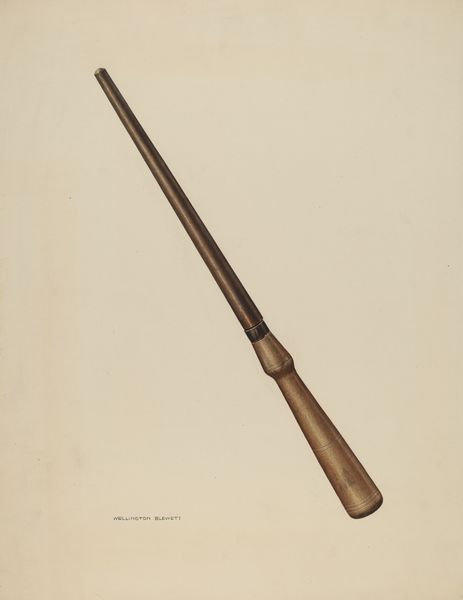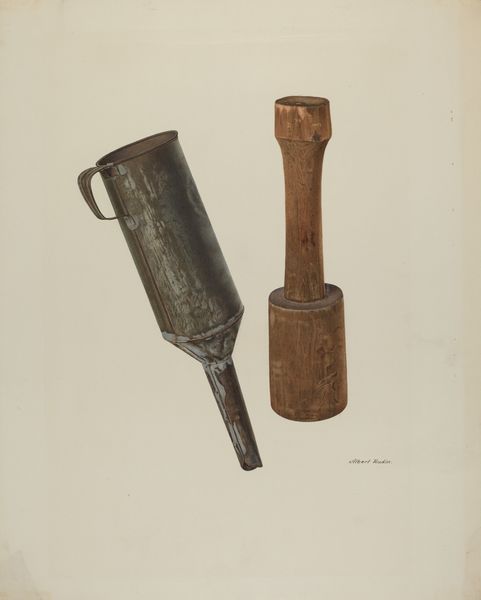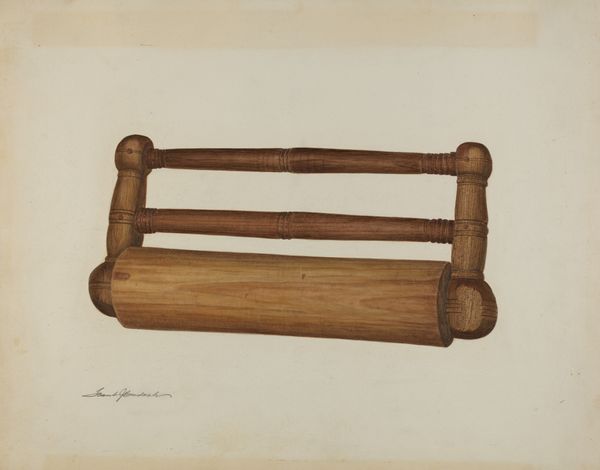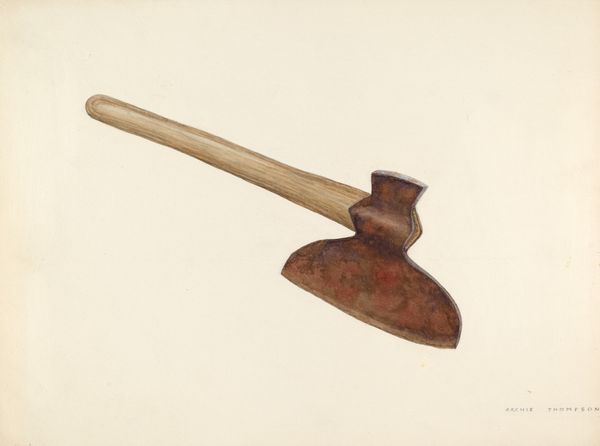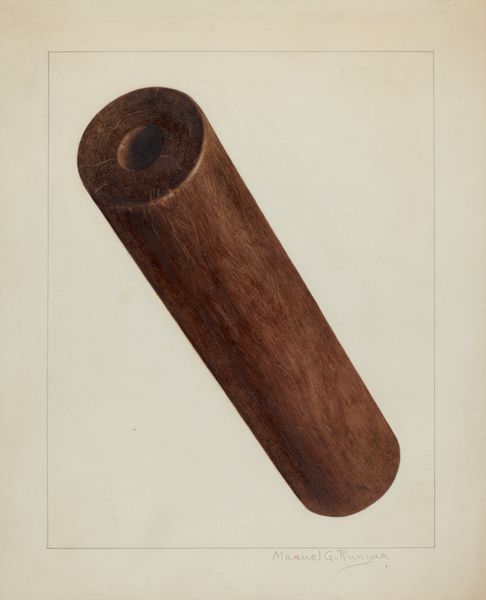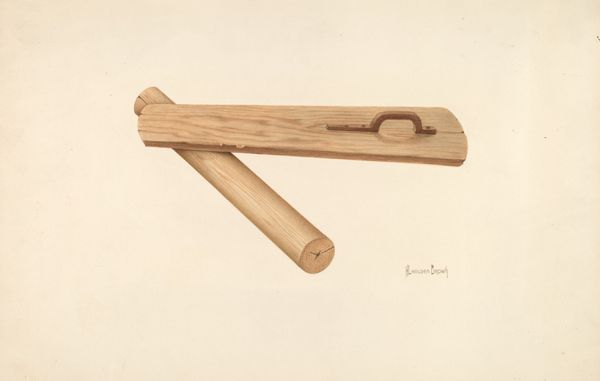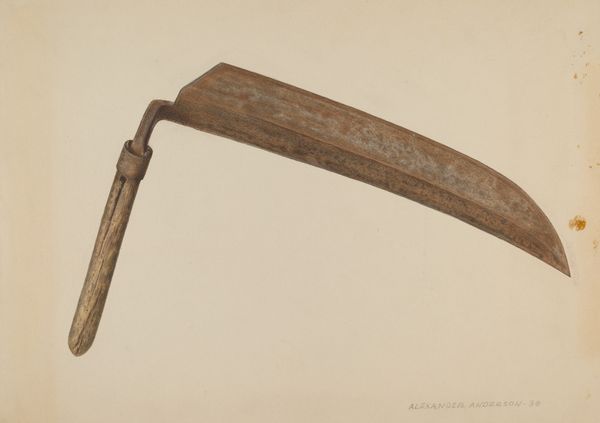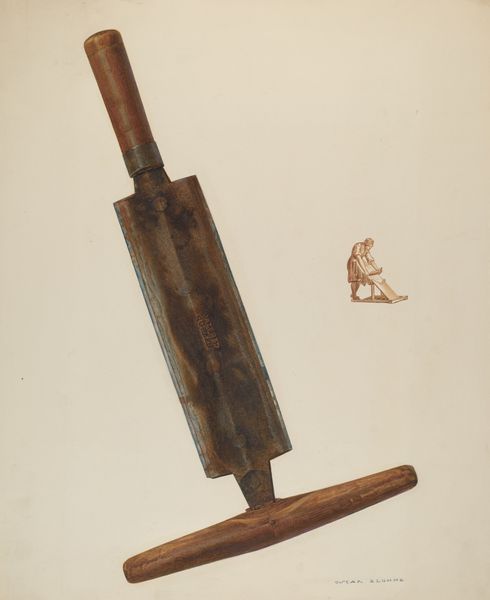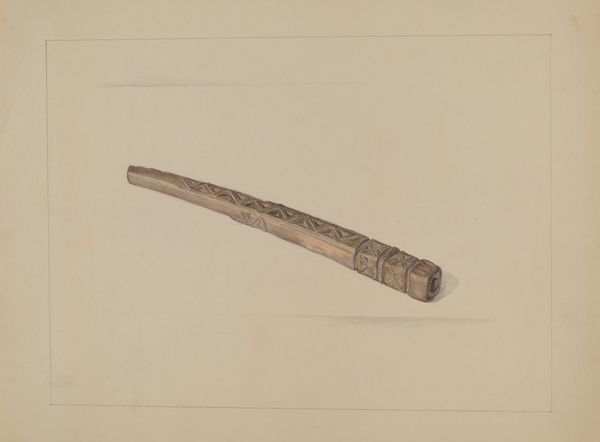
drawing, watercolor, pencil
#
drawing
#
charcoal drawing
#
watercolor
#
pencil
#
academic-art
#
charcoal
#
realism
Dimensions: overall: 45.6 x 55 cm (17 15/16 x 21 5/8 in.)
Copyright: National Gallery of Art: CC0 1.0
Editor: We're looking at "Frow and Frow Club," a drawing made between 1935 and 1942 by Oscar Bluhme. It's made with pencil, charcoal, and watercolor. The rendering of these woodworking tools is very straightforward, almost like a product demonstration. What can you tell me about this piece? Curator: This artwork brings to the forefront the unseen labor inherent in creation. Bluhme isn't just depicting tools; he's showing the instruments of production, the implements through which human agency transforms raw material into… something else. Do you see any marks of wear, or evidence of usage on the objects? Editor: I do see some lines and indentations, especially in the larger wooden piece, suggesting wear and tear. What does that signify in the larger context of the work? Curator: These details root the image in lived experience, it seems that we can draw inferences about who owned these tools and their historical and cultural contexts from looking at those marks of labor. They reveal that materiality is key to its meaning. Were these tools commonly used during that period, or are they specialized instruments that are emblematic of craftsmanship, challenging that conventional distinction? Editor: That’s fascinating, how the tools’ function and material place it within a social and economic sphere. Are you suggesting Bluhme intended to comment on the relationship between labor and art itself? Curator: Precisely. The detailed rendering elevates the utilitarian to the aesthetic, prompting a consideration of the artistic merit embedded within the functional. By examining these labor objects, the piece compels a broader appreciation for craft and manual trades that typically lack recognition in traditional art circles. It’s art *about* work and the value we place on it. Editor: I see now how focusing on the materials and their use gives such a deeper understanding of Bluhme's work and its commentary on labor and artistic value. Thank you. Curator: Absolutely, the material reality often tells a more profound story.
Comments
No comments
Be the first to comment and join the conversation on the ultimate creative platform.
